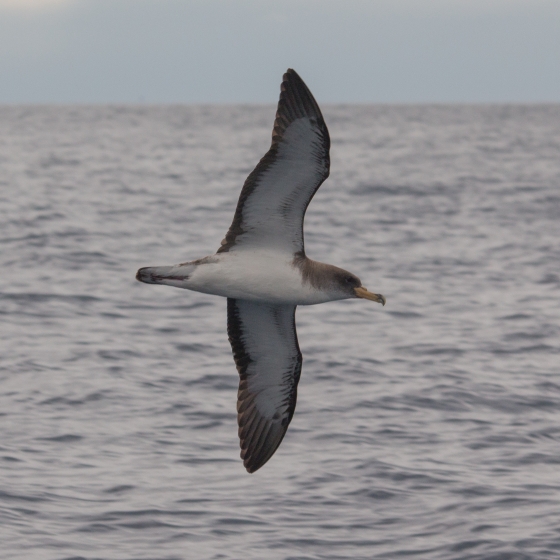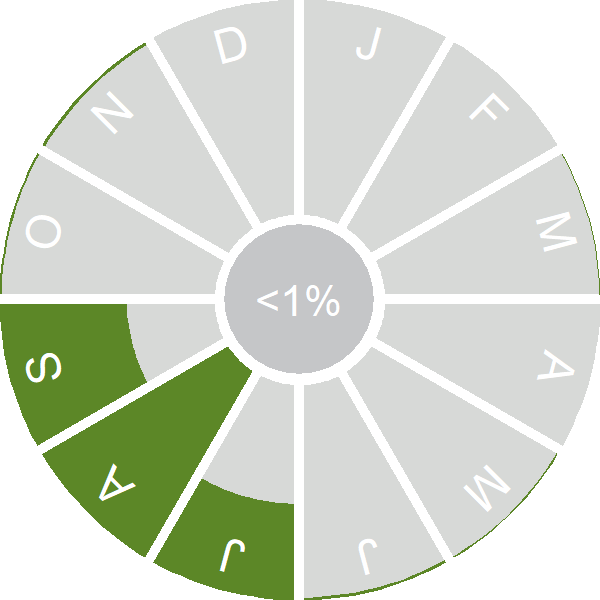Cory's Shearwater

Introduction
This large brown and white shearwater, with its languid flight, visits our waters during the late summer months.
Cory's Shearwaters breed across the Atlantic archipelagos; the Azores, Canaries, Salvagems and Berlengas all have breeding colonies. Birds start to leave these colonies during August, with many heading for the Bay of Biscay. Cory's Shearwaters occur in our waters in varying numbers between years; in some a few thousand might be seen whilst in others hardly any at all. In years when large numbers occur in the Bay of Biscay some birds head further north and are responsible for increased sightings around our coasts.
Cory's Shearwaters spend the winter off the coasts of South America and South Africa before returning to their breeding colonies during March.

Key Stats
Identification
Songs and Calls
Call:
Status and Trends
Conservation Status
Population Change
Cory's Shearwater is a scarce passage migrant to the UK, traditionally seen during July to September in the southwest of England [White & Kehoe 2024]. The number of Cory's Shearwaters observed off the southwest coast has increased since 2017, with birds present for longer periods and observations continuing into October, a trend attributed to warming waters in the North Atlantic caused by changing climatic condition [Flood & Gutierrez 2024].
Distribution
Cory's Shearwaters are recorded mostly from the coastline of southwest England but there are annual records from select sites along the North Sea coast.
Occupied 10-km squares in UK
or view it on Bird Atlas Mapstore.
European Distribution Map
Distribution Change
This vagrant is too rarely reported to map distribution change.
Seasonality
Cory's Shearwater is a scarce passage seabird recorded at selected seawatching locations, mostly in July and August.
Weekly pattern of occurrence
The graph shows when the species is present in the UK, with taller bars indicating a higher likelihood of encountering the species in appropriate regions and habitats.

Movement
Britain & Ireland movement
European movements
EuroBirdPortal uses birdwatcher's records, such as those logged in BirdTrack to map the flows of birds as they arrive and depart Europe. See maps for this species here.
The Eurasian-African Migration Atlas shows movements of individual birds ringed or recovered in Europe. See maps for this species here.
Biology
Productivity and Nesting
Nesting timing
Egg measurements
Clutch Size
Survival and Longevity
Survival is shown as the proportion of birds surviving from one year to the next and is derived from bird ringing data. It can also be used to estimate how long birds typically live.
Survival of adults
Classification, names and codes
Classification and Codes
- Order: Procellariiformes
- Family: Procellariidae
- Scientific name: Calonectris borealis
- Authority: Cory, 1881
- BTO 2-letter code: CQ
- BTO 5-letter code: CORSH
- Euring code number: 35970
Alternate species names
- Catalan: baldriga de Cory
- Danish: Atlantisk Skråpe
- Dutch: Kuhls Pijlstormvogel
- Estonian: portugali tormilind
- French: Puffin cendré
- German: Corysturmtaucher
- Irish: Cánóg Cory
- Italian: Berta maggiore atlantica
- Polish: burzyk duzy
- Portuguese: cagarra-grande / cagarro-dos-açores
- Slovak: víchrovník žltozobý
- Spanish: Pardela cenicienta canaria
- Swedish: gulnäbbad lira
- Welsh: Aderyn Drycin Cory

